 |
|
 |
Open Innovation Newsletter
Edition 25 - June 2013 |
|
|
|
 |
Open Innovation Newsletter is produced by Wenovate – Open Innovation Center. It brings interviews with professionals involved in the practice of OI in Brazil with the aim of registering cases, debating concepts and creating opportunities. It also brings articles and information about courses and events. |
|

ONE QUESTION, THREE ANSWERS
What do you think are the best cases of open innovation and why?
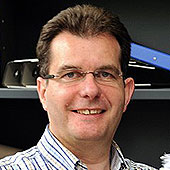 |
Wim Vanhaverbeke
Hasselt university and Exnovate
“One of the most illuminating examples is the case of P&G with its Connect and Develop program, which focuses on Open Innovation for already existing businesses, crafting new products for the market's traditional categories. Despite its good virtues, the program faces a complex challenge: innovate in new businesses. In this category, a case of success is from the biotechnology company DSM. They search for businesses in emerging areas or with a promising future and then develop them. Another important case is from a small Belgian business called Curana, with about 25 employees, which has been practicing open innovation for the past 15 years. Because of connections with its partners, the company went from manufacturer of bicycle components to design expert. Changes of strategy made the company famous, which increased its ties with the public and, today, has constant processes of integration with the final consumer in product conception.” |

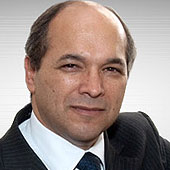 |
Carlos Arruda
Fundaçao Dom Cabral
“In Brazil, a noteworthy case is the Embraer experience, which, in the 1990's, created the concept of World Wide Risk Partners - risk partners for the development of new products that goes beyond anything their engineers and researchers could have developed. The application of such concept became what we'd call a dynamic competence. In other words, being capable of working with a diversity of partners in the development of a single platform. Recent examples of other companies from the same sector show in what ways this modality could become a challenge. I also point out to the use of crowdsourcing, just like the case of Fiat in the project Fiat Mio. The challenge is to make that big volume of ideas that reach the company into something of value to the market and the company itself.” |

 |
Eduardo Vasconcellos
FEA/USP
“Case 1: Laboratory Fleury. When it was created (in the 19th century), it was determined that doctors would work half time to continue their practices in university. The real objective was to keep a bridge with academia for innovation and competency. Today, it's one of the biggest five in the whole world and a groundbreaker in innovation.
Case 2: Petrobras. For many decades, its research center started a network of university specialists in search of skill and innovation. Today, it's a leader in oil production in deep waters, an activity that required many technological innovations.” |
[+] Top
|
|

SUITE
Adaptation and growth through open innovation
When Berkeley University professor Henry Chesbrough published, ten years ago, the book that spread the concept of open innovation, he used as foundation for his theory a study based on the observation of companies that tried to adapt to the tough reality presented to them: strong competition, emerging of new technologies, new business models and new players at a swift speed and with the risk of losing space and sales to those newcomers. The phenomenon wasn't an isolated fact. Big companies that had heavily invested in the structuring of its R&D departments felt threatened. To be able to compete, collaboration processes became key. They needed to search backups far away from its walls.
It was in that context that some companies created programs grounded on open innovation – and they produced results that are still relevant today. One example is the Connect and Develop program, from P&G. It started in 2001, when 90% of the companies' innovation was done behind closed doors. Nowadays, more than 50% of its innovations involve some kind of collaboration with the external world.
 GE open innovation program addresses sustainability. Open innovation and generation of new businesses
The world-wide known case of Eli Lilly shows that, instead of focusing on internal solutions, it's possible to create new businesses for the market. In the end of the 1990's and beginning of 2000's, the company was trying to improve its process of new ideas generation and created an internal participation program. Gradually, the company sensed they needed ideas from the outside world as well. It evolved to a new model of open innovation. By noticing the initiative could have value outside the company, a startup was created exclusively for this activity.
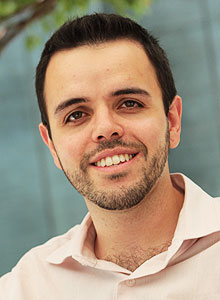 Adriano Jorge, Natura: the maturity of a network with 200 partners. For the head of the project, executive Alph Bingham, the initiative and the way it evolved relates to new ways through which people organize and interact with each other. "The internet casted a wide net for cooperation. By the 2000, the way drugs were developed became unfeasible. In this new approach, it's possible not to predict, but to imagine the future in a reliable way", he says.
Brazillian Case
In Brazil, one of the first companies to publically state that practices of open innovation was Natura. Its relationship with external researchers started in 2001, through call for projects of the agencies Finep, CNPq and Fapesp. Since then, it started a learning process that would enable the collaborative model and, only in 2005, it started to advertise its open innovation programs. The most important program, kept until nowadays, is the Natura Campus, that accepts on a regular basis projects from researchers interested in improving or developing products.
Little by little, the company expanded its open innovation practices to involve suppliers, service providers and experts. "Today, we have almost 200 partners and we're working on a new network aimed at the final consumer. Our challenge is to make collaboration advance in all steps of innovation", said the manager Adriano Jorge. "Over the last years, we've been improving our internal structure to become more capable of managing this collaborative model"
.
[+] Top
|
|

INTERVIEW
Senai and MIT start research about innovation networks
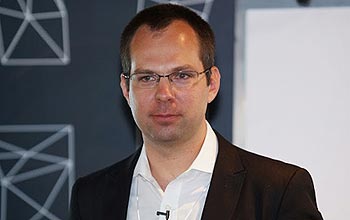 Marcelo Prim: The greatest challenge is to work collaboratively, not only competitively. The Brazilian National Service of Industrial Apprenticeship (Senai) gives some steps regarding the partnership created last year with Massachusetts Institute of (MIT). In the second semester, the organization will start a research project focused on Brazilian ecosystems of innovation, for the benefit of Brazilian industry competitiveness. The project will accompany the implementation of the Senai Institutes for Innovation and is expected to last five years. They're being constructed for more than a year and it's expected that in a maximum of eight years all institutes will be self-sustainable. The initiative also counts with the support of German institute Fraunhofer, who's been creating the institutes' business plans.
Chosen to lead this project, expert in industrial development Marcelo Prim explains why this partnership is crucial for Brazil to improve its understanding of innovation networks.
Wenovate: How will this project work?
Prim: There will be two titular teachers from MIT conducting a five-year long research, with involvement from PhD and Master students. There will be a team in Brazil and another in the United States simultaneously. The local team will analyze the regional ecosystems, the aspects of the industry and its value chain and then develop methods to be implemented. MIT will analyze the Brazilian industrial environment and develop means to connect the industry with Senai Innovation Insititutes and Senai Technology Institutes. The focus is to promote pre-competitive innovation, integrating the whole industrial system in a national scale.
Wenovate: Why is this subject relevant?
Prim: It's essential, because Senai Institutes were created to connect academia - basic and applied research - with the Brazilian industry that practices innovation. This bridge is determined as pre-competitive innovation, employed at the tests application in the product development phase. For that to work, it's fundamental to develop intellectual capital, to create infrastructure (buildings, equipment), qualified people and competencies and relationships. It's with the last one that MIT will help us. Related to this project is the construction of a national competency in startup communities, promoting disruptive innovation that will happen in Senai's innovation network.
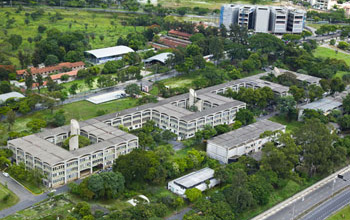 SENAI Institutes for Innovation study how to create a network. Prim: Senai Institutes will promote industry innovation through partnerships with companies with strong relationship with universities. Society's great challenges, like energy, sustainability and security should bring together complementary competencies from different SIs, always working with industry and academia.
Wenovate: How is Senai articulated with its innovation institutes?
Prim: This is the main goal of our project with MIT and therefore the answer is in construction. Our institutes are currently developing their business plans to structure a complementary network of national assistance to the industry, with technologies and themes directly associated with Brasil Maior (Greater Brazil) program. In the meantime, new collaborative actions will be launched to back the construction of this national network for innovation.
Wenovate: What are the challenges related to those networks?
Prim: The greatest challenge is to work collaboratively, not only competitively. Competition is normal inside an ecosystem, but some challenges need a structured network to develop innovative solutions. Without the network, it's unlikely we'll get there.
Wenovate: What are the difficulties of creating a national network, like Senai's?
Prim: The first difficulty is structural: we need to provide enough premises and equipment to carry out projects. The second is related to human resources: to develop and involve critical mass. The third is to foment the creation of a collaborative network among Senai Institutes from different states and different fields. Collaboration is essential to tackle challenges because, without it, we'd have the prevalence of incremental innovation. The focus is to increase competitiveness of the Brazillian industry as a whole, intending to regress the critical state of Brazil's commercial balance.
[+] Top
|
|

FUNDING
Inova Empresa has almost R$16 bi available
Régis Assao, director at Allagi
Brazilian government investments to foment innovation in companies made the headlines in March this year. A total sum of R$32,9 billon was announced for the Inova Empresa (Inova Enterprise) program. Being a broad initiative, that condensates a series of lines of work and different resources (BNDES, Finep, setorial obligations, etc.), when the package was launched it was still a bit hard to see its actual employment and reach.
Three months later, bids for a significant part of those resources were announced and, gradually, it's become possible to understand how those values are commissioned. One of the ways to apply them is by launching calls for projects in sectorial programs or Plans of Combining Actions.
Funds for innovation in healthcare, for instance, are already well defined. Resources will be distributed through bids from Inova Health, with R$1,3 billion to drugs and R$600 million to equipment (both with mixed funds from the Ministries of Health and Science, Technology and Innovation). With an extra of R$1,7 billion for "further actions", those resources total R$3,6 billion promised to the sector.
It's the same situation with the Aerospace and Defense sector, which will apply its R$2,9 billion through the same Inova Air-Defense; and from the sustainability field, which will dedicate R$2 billion to the program Sustainable Brazil.
Announced in April, the Inova Energy will take R$3 billion, from which R$600 million derives from Aneel (companies of generation and transmission should invest 1% of its liquid revenue in R&D and distribution companies, 0,75%). Besides the resources of Inova Energy, there is also the Paiss (Combining Plan of Support to Technological Innovation in the Sugar-Energy Industry). The initiative focused on business plans and funding of projects for development, production and sales of new technologies for the sugar cane's biomass, are already hiring the first projects and could distribute up to R$1 billion. To amount to the total resources foreseen at the package for the energy area, the government will also have to announce the employment of another R$2,3 billion in other activities.
In the case of the agribusiness chain, expectations are of R$2 billion, since the Inova Agro already indicated the use of more than R$1 billion from the expected R$3 billion. Its employment has not yet been made clear for the Communications and Information Technology area. R$2,1 billion was destined to the sector, from which R$14 million was directed to the program Startup Brazil and R$60 million to economic subsidy – "TI Maior" (Greater TI).
By mapping investments outside Inova Empresa, we could also look to the non-sectorial fronts of innovation funding. Among them, there are transversal actions, for which the package should dedicate R$5 billion.
For Tecnova, a Finep program of economic subsidy for micro and small companies, a total sum of R$250 million was reserved, from which there is still R$160 million left.
In the case of funding program Inovacred, the balance is still of R$1 billion and, for Criatec, R$50 million. Together, resources from Inovacred and Criatec add up to R$370 million. We could also add to this sum the relative values of PSI (BNDES Programs of Development Support), Innovation and Pro-Engineering (R$1 billion) Embrapii (R$1 billion), Pronatec (R$470 million), the public bid from the Ministry of Science, Technology and Innovation to Technological Parks (R$40 million), to Funtec (R$250 million) and to resources to Human Resources development (R$100 million). There's still R$144 million of subsidy: R$60 million for the TIC sector, R$30 billion for sustainable construction and environmental cleaning, R$24 million for products obtained throughbiotechnology processes and R$30 million destined to biotechnology.
One concludes it's difficult to identify where and how resources of Inova Empresa are distributed. It's possible to estimate a commitment of about R$16 billion (49% of the total investments announced by Inova Empresa until 2014). But it's practically impossible to segregate new and old resources. And despite of the many bids released, very little was hired and even less was executed.
There are also doubts about the execution of programs with the same infrastructure and personal previously available at Finep and BNDES. A similar problem to the one faced by Capes to execute the Science without Borders program.
From the companies side, we've been seeing many doubts between those who know the initiatives (and many of the companies don't), being old tools like economic subsidy or new ones like Combining Action Plan, which launched its first bid more than two years ago and that only combines traditional instruments from BNDES and Finep.
Looking at the bright side, we see that the interest is growing and companies are increasingly structuring themselves to use all resources available appropriately. And we believe that the combination of policies tends to impulse innovation in Brazil.
[+] Topo
|
|

ARTICLE
Desafio Brasil: open innovation and entrepreneurship
Bruno Rondani
Launched in the beginning of June, the 8th edition of Desafio Brasil ("Brazil Challenge"), the biggest entrepreneurship high impact competition in the country, brought some news that deserves the attention of open innovation managers and venture capital investors. This year, besides the traditional competition, the program platform includes spaces dedicated to sharing of ideas and to interaction of participants with each other and specially with mature companies interested in open their challenges to this entrepreneurs network.
The goal is to build a co-creation environment in which new business proposals - more consistent than those elaborated individually - could emerge. By posting an idea at the network, the participant can receive feedback from other people, hear some critique, be questioned and find synergies and potential partnerships. With a riper idea and, maybe, a stronger team, they could submit the startup to the general competition or in the companies’ challenges.
This proposal is related with the most recent discussions about the power of collective work. If one checks at the platform, the network registered 700 user in the first ten days, who posted 132 ideas. From these, 46% published their ideas for cocriation and 54% are in the range of solid ideas, already submitted as proposals, inaccessible to other participants. This number surprised some specialists who believed the closed culture would prevail.
The reasons why a entrepreneur publicizes his ideias deserve reflection. The question emerged in the network itself, when a user asked: "How big is the risk of posting an idea and have it stolen by someone else?". He translated clearly the greatest fear related to cooperation and open innovation. The risk does exist. But to innovate and to start your own business implicates risks, which should be calculated together with the benefits each decision brings.
In the case of an entrepreneur that has just an idea, to seek for help is fundamental. First, it's not so easy to 'steal' an idea. Its concretization and the ways to turn it into reality demand a lot of effort and commitment. Besides, by talking, being questioned, trying to connect with people with skills complementary to yours and seeking partners to share the risks is how an entrepreneur puts the idea in the paper and, eventually, in the business world. "Everything is harder when you're alone", another participant said.
One must also remember that Desafio Brasil produces an environment that is not only formed by beginners. Anyone could participate or being invited as an expert, mentor or team member at any moment during the process. Besides, participation of big companies is a fundamental piece.
Attracted by the possibility of connecting to the community of startups and to supporting entrepreneurs and their ideas, many companies already showed interest in collaborating. For them, it's an opportunity to get to know innovation tendencies and the stage of maturity of such ideas. They can also feed their own innovation processes.
For entrepreneurs, this participation is the chance of gaining visibility and establishing partnerships that will be decisive to success. Big companies contribute for entrepreneurs to be connected since business concept phase with a realistic view of market demands.
The example of Desafio Brasil brings to us some questions regarding the different ways of fomenting ecosystems of innovation and the role of startup competitions. What is more beneficial: to cooperate or to compete? It seems clear that there is not an opposition between both. Even if we think about the entrepreneur alone, to endeavor is a collective activity in essence, as is innovation.
The combination of steps in the process stimulates the entrepreneur to be inspired by other’s history, to connect to possible clients, specialists and people interested in general. It is possible to transform one’s personal dreams in viable services and products, attracting and engaging mentors and investors.
A competition of startups elaborated in a way to integrate and aggregate the two contributes to many factors. One of them is the stimulus to immediate concretization of projects that could be postponed indefinitely. Another is the entrepreneur’s education, since it stimulates practice and learning and puts them in front of other entrepreneurs, experts and recognized leaders who participate in the selection. Furthermore, there is improvement of business that end up reaching the market, since it works as filter where selection and exclusion take place - but also modifies and improves while promoting two fundamental items: networking and team-building.
[+] Top
|
|

WENOVATE & PARTNERS NEWS
Natura launches initiative of co-creation in network for innovation challenges
In the last June 17th, the first step of the program Cocriando Natura (Co-creating Natura) was launched. The initiative is a network open to people who identify with the brand and want to co-create with the company. It's a permanent network, motivated by innovation challenges. To tackle them, interaction environments are held online and in presence with the interested network. The challenge focuses on ideas, concepts, products or services. Each one of those processes is called Co-creation Seminars. They have a pre-defined schedule and is divided in three phases, that could vary from case to case. The network could be accessed at: www.natura.com.br/cocriando.
[+] Top
|
|

SAVE THE DATE
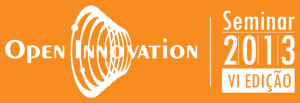
25 - 27 November - WTC São Paulo |
[+] Top
|
|

 |
| |
Follow the activities of Wenovate and link up with other innovation professionals. |
|
|
|
| Sponsorship and collaboration |
 |
|










